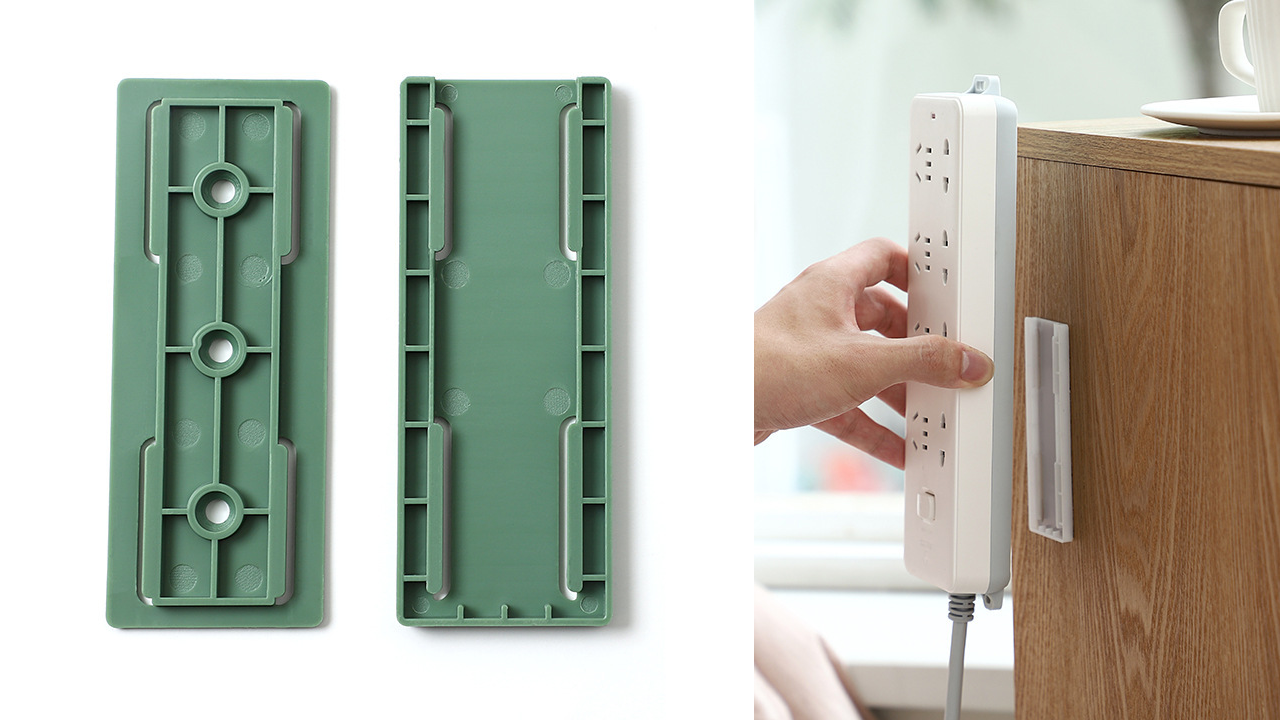When it comes to body organs, I believe many people first think of the ears, nose, eyes, mouth, liver, heart, spleen, lung, kidney, etc. But what many people do not know is that the foot is actually one of the important organs of the human body.
Although the "sense of existence" of the foot is not high at ordinary times, its importance is beyond doubt. If people are compared to a tree, then the feet are the "roots" of the tree, supporting the weight of the human body.
In addition, when the human body is abnormal, the foot often changes. It can be said that it is one of the "alarm" of the human body. When you have some abnormalities in your feet, even if you don't find any other abnormalities in your body, it may mean that you have begun to age.
When you grow old, your feet will look different
When the human body is aging, the obvious symptom of the feet is that the skin may gradually become dry, because when people begin to age gradually, the blood supply in the body gradually weakens, and the blood obtained by the feet far from the heart will gradually decrease, and the loss rate of collagen and other substances will gradually increase with age. At the same time, the feet may become thinner and smaller, which is also caused by excessive loss of water and collagen.
Aging may also lead to flattening of the soles of the feet. This is because the muscles in the body will gradually shrink with the aging of people, and the ligaments on the soles of the feet will also become loose. When the arch of the foot loses the "pulling" effect of muscles and ligaments, it will gradually become flat. In addition, when people grow old, the blood supply of the feet decreases, and the muscles and ligaments lose moisture and lose some elasticity, which may gradually stiffen the feet and greatly reduce their mobility. There are still many abnormal feet when people grow old, but this does not mean that when they reach an appropriate age, as long as they have abnormal feet, it means that the body starts to grow old. Some foot abnormalities are not signs of aging, but may be signals of disease.

These abnormalities or disease signals appear in the feet
As one of the important organs of the human body, the foot is also the "target" of many diseases, and the symptoms of many diseases will appear more or less in the foot. The following abnormalities in the foot may be the signal of disease.
1. Feet cool
Cold feet are a situation that many people will encounter, especially in cold winter. Some people's hands and feet are cold, which may be a normal situation. However, if the feet are still cold in hot summer and it is difficult to warm them, it may be caused by diseases. The reason why the feet get cold is generally because of problems with blood vessels or nerves. When the blood circulation in the blood vessels becomes poor, resulting in serious insufficient blood supply to the feet, it may lead to cold feet, which may be caused by diabetes, hyperlipidemia and arteriosclerosis of the lower limbs.
Diabetes will change the blood composition of patients, causing changes in blood vessels and affecting blood flow; Hyperlipidemia will lead to problems in the endocrine system and circulatory function of the human body, causing vascular diseases; Arteriosclerosis of the lower extremities will narrow the blood vessels of the lower extremities and directly affect the blood flow. It is a kind of feeling that the feet become cold, and the feeling of the human body is innervated. Therefore, if the feet become cold, the possibility of neuropathy should be considered. If the peripheral nerves are damaged due to diabetes, alcoholism, trauma, liver and kidney diseases, tumors, immune diseases and other factors, it may cause sensory abnormalities and cold feet.
2. Foot pain
Pain is an abnormal condition that occurs in many parts, including the feet. Many elderly people will suffer from foot pain, but most of them think that this is a normal manifestation of aging, which is not the case. Foot pain is likely caused by disease. The location of foot pain is different, and the reasons are often different. If it is pain in the front foot, it may be due to plantar pain, which is mostly caused by abnormal structure of the foot or abnormal metatarsophalangeal activities. If you wear shoes with too high and too narrow heels for a long time, or if the pressure on the front foot is too large, it may cause the fat pad on the sole of the foot to become thin or degenerate, resulting in the pain of the front foot.
If it is pain in the toe, it may be caused by gout, hallux valgus and other factors. When patients with gout have foot pain, they often show pain in the first joint of the big toe. At the initial stage, the affected joint will appear red, swollen, hot and painful, and the pain is often very strong. With the continuous development of gout, the pain will gradually spread around, and even lead to pain in the whole foot. Under normal circumstances, a person's big toe is facing forward, but some people's big toe does deflect outward, which is called "hallux valgus". In the early stage of this disease, there are usually no obvious symptoms except for the appearance. However, with the continuous development of the disease, the patient may have serious abnormalities such as severe deformity of the foot and pollicis.
If it is heel pain, it may be caused by plantar fasciitis or fat pad inflammation. If there is pain in the back of the foot, it may be caused by inflammation of many small joints, such as the talocapital joint and the metatarsal joint. When people have foot pain, their pain positions are different, which may be the above-mentioned different lesions.
3. Foot edema
Edema is one of the common abnormalities of the feet. Most of them show that the feet become larger with naked eyes, the skin is tight, there is obvious depression when pressing with hands, and it takes a period of time to recover after the pressing pressure disappears. There are also many reasons for foot edema. The common ones are blocked venous return, infection, foot lesions, systemic diseases and so on. When the venous return of the human body is blocked, the output and input of the heart will be reduced, and the physiological circulation of the body will be abnormal, which will cause a large amount of liquid to be stored in the lower limbs, resulting in edema of the feet.
If the foot is injured and the wound is infected, the blood circulation around the foot may be obstructed, resulting in edema. When the foot suffers from rheumatoid arthritis, gouty arthritis, osteoarthritis and other diseases, it will cause local soft tissue swelling, hinder the normal distribution of surrounding blood vessels, and lead to foot edema. In addition, systemic diseases such as heart failure, renal insufficiency, hypoproteinemia and liver cirrhosis may also lead to foot edema.
4. Numbness of feet
When people have numbness in their feet, it may also indicate that they have some diseases. The reason why the feet are numb is that the blood circulation in the blood vessels of the feet is blocked, resulting in the ischemia of the feet. The cause of numbness of the feet is similar to that of cold feet, and the symptoms of both may also exist at the same time. If you have numbness in your feet, you should suspect that you have diabetes, hyperlipidemia, arteriosclerosis of lower limbs and other diseases.
5. The foot wound is difficult to heal
People may be injured or physically injured due to various accidents, but these wounds usually heal gradually. If there is a wound on the foot, but it is difficult to heal after a long time, there may be a problem with the body. If people are malnourished, it may cause the foot wound to be difficult to heal. This is because wound healing requires a lot of nutrients, especially protein support. When people are malnourished, they will not have enough nutrients to support the healing of the wound, which will greatly prolong the recovery time.
If the quality of blood vessels in the human body is poor, and there are problems such as stenosis and hardening, the blood flow may be blocked, and the supply of nutrients and oxygen to the wound may also be problematic, which may slow down the healing speed of the wound. In addition, diabetes can also lead to foot wounds that are difficult to heal. Moreover, the wounds are likely to deteriorate and develop into ulcers, which will be difficult to heal for a long time. In severe cases, the wound may even develop into gangrene, often leading to amputation or even loss of life.

The foot is an organ in the human body that is less "valued". Its "sense of existence" is relatively low, but its importance is high, and it can often reflect the state of the body. When people grow old, their feet may have dry skin, flat soles and reduced mobility, which is usually normal. If the foot is cold, painful, edema, numbness, and the wound is difficult to heal, it indicates that the body may be abnormal and may have some diseases. We should also pay attention to it~
Popular Articles
-
Fitness Equipment | How to choose a suitable for their own yoga mat?

-

Photos
The world's most beautiful big cities at nightJul 01, 2025
-
 These pieces of home goodies, home essential artifacts, has been using a straight cool, home happiness burst
These pieces of home goodies, home essential artifacts, has been using a straight cool, home happiness burstJul 01, 2025
-

Photos
Keep your power sockets and air conditioner remote control well storedJul 01, 2025
-
 The world's most dinosaur-like lizards: Armadillo ring-tailed lizards
The world's most dinosaur-like lizards: Armadillo ring-tailed lizardsJul 01, 2025
-
 These are the top 4 causes of sunken nails to watch out for!
These are the top 4 causes of sunken nails to watch out for!Jul 01, 2025







Comments
0